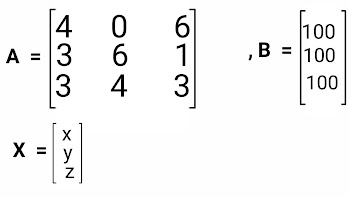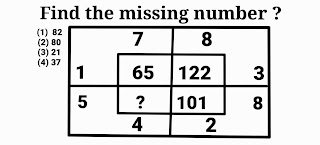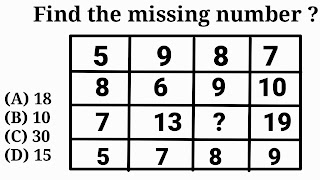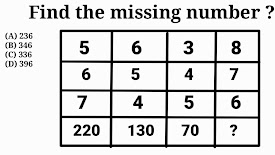Inverse method of solving linear equations of three variables
Matrix method of solving linear equations of three variables with the help of example.
Set of given equations are
4x + 6z = 100 --------------------------------> (1)
3x + 6y + z = 100 -----------------------------> (2)
3x + 4y + 3z = 100 ---------------------------> (3)
The system of these equations can be transformed into Matrix formed

















































